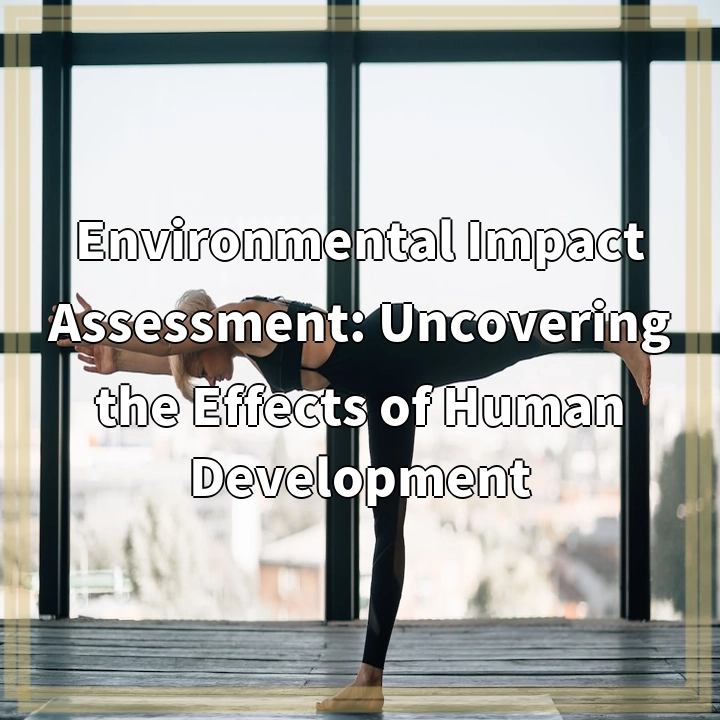Physical Address
304 North Cardinal St.
Dorchester Center, MA 02124
Physical Address
304 North Cardinal St.
Dorchester Center, MA 02124

Environmental Impact Assessment (EIA) is a valuable process that evaluates the potential environmental effects of a proposed project or development. It is an essential tool used to identify, predict, and assess the impacts that human activities can have on the environment.
Insufficient Consideration of Cumulative Effects
One of the challenges of EIA is the limited attention given to cumulative impacts. Projects may individually pass the assessment, but their combined effects can be detrimental to the environment. This problem arises due to the fragmented approach used in assessing projects.
Lack of Transparency and Public Participation
Public engagement and involvement in the EIA process are crucial for democratic decision-making and ensuring that the environmental concerns of communities are adequately addressed. However, there are instances where the process lacks transparency, and public participation is limited or omitted. This can result in a lack of trust and accountability in the assessment process.
Inadequate Consideration of Alternatives
EIA should include an evaluation of alternative project options to identify the most environmentally sustainable option. However, in some cases, the assessment process may focus solely on the proposed project and neglect potential alternatives. This can lead to missed opportunities for more environmentally friendly solutions.
Limited Integration of Socioeconomic Factors
EIA primarily focuses on the environmental impacts of a project, but it is equally important to consider the socioeconomic impacts as well. This includes assessing potential effects on local communities, indigenous groups, and the overall well-being of society. Many EIAs fail to adequately address these social and economic factors.
Inadequate Post-Approval Monitoring and Enforcement
The effectiveness of EIA lies in the post-approval monitoring and enforcement of mitigation measures. However, there are instances where monitoring is lacking, and enforcement of conditions is weak. This can lead to non-compliance and the persistence of negative environmental impacts.
Enhancing Consideration of Cumulative Effects
To overcome the problem of insufficient consideration of cumulative effects, a more holistic and integrated approach should be adopted. This involves conducting comprehensive assessments that examine the combined impacts of multiple projects within a region, considering their synergistic effects on the environment.
Promoting Transparency and Public Participation
To ensure transparency and encourage public participation in the EIA process, governments and project proponents should actively involve stakeholders from the early stages. This can be achieved by providing accessible information, conducting public consultations, and incorporating feedback into decision-making processes.
Emphasizing Alternatives Assessment
EIA should prioritize the evaluation of alternative project options that minimize environmental impacts. This requires project proponents to thoroughly explore and consider different approaches, technologies, and locations before reaching a decision. Rigorous evaluation criteria should be established to guide the assessment of alternatives.
Integrating Socioeconomic Factors
A comprehensive EIA should include the assessment of socio-economic impacts alongside environmental considerations. This involves evaluating potential effects on local communities, indigenous groups, and vulnerable populations. Proponents should engage with relevant stakeholders and consider their socio-economic concerns throughout the assessment process.
Strengthening Monitoring and Enforcement
Post-approval monitoring and enforcement should be prioritized to ensure compliance with environmental protection measures. Adequate resources should be allocated for monitoring activities, and clear enforcement mechanisms and penalties for non-compliance should be established. Regular audits and inspections can help identify issues and take timely corrective actions.
Environmental Impact Assessment is a valuable process that can be improved to address real-world problems. By enhancing consideration of cumulative effects, promoting transparency and public participation, emphasizing alternatives assessment, integrating socioeconomic factors, and strengthening monitoring and enforcement, the effectiveness and accountability of EIA can be enhanced.
If you’re wondering where the article came from!
#